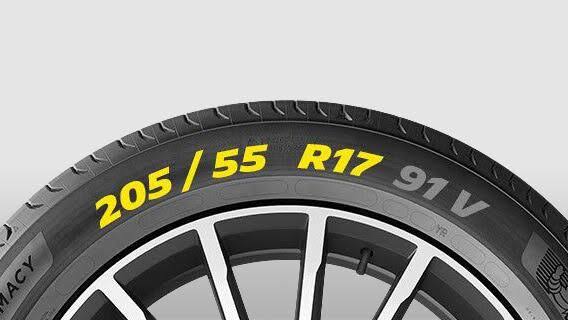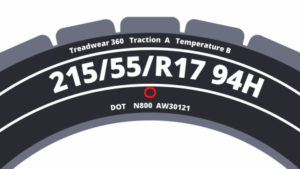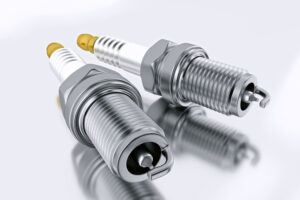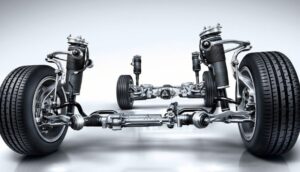I was once stopped by the Federal Road Safety Corps for routine checks, the officer checked all my documents and found them in order. As is their custom, he wanted an excuse to implicate me for an offence, so he took a walk around the vehicle and blurted out, “Your tyres are expired!”. I smiled and replied, “No, they are not!” I then, went on to prove him wrong.
This experience was only possible because I could interpret the different inscriptions on the tyre sidewall, and you should too!
This post is a continuation of an earlier post on car tyres which you can read “here”
Let’s get into it.
Every car has a tyre placard on the driver door mount that states the tyre type, the tyre size, and the tyre pressure required for the car to function optimally. This tyre placard is important because it guides the car owner to install the right tyres for his vehicle.
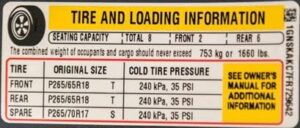
And on all tyres, some inscriptions explain all that there is to know about the tyre and how best it will serve you and your car.
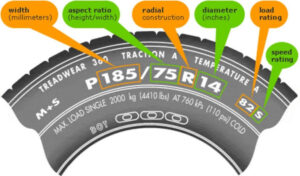
1. Tyre Size (Example: 185/75R14 82S)
Every tyre has a size marking, typically found in this format:
185/75R14 82S
Let’s break it down:
185 – This is the tyre width in millimetres. It is the width of the contact patch of the tyre with the road surface
75 – Aspect ratio (the height of the sidewall as a percentage of the width). To get the real height in mm, it will be 75% of 185, which is 138.75mm
R14 – R indicates that the tyre is of Radial construction, and 14 is the wheel diameter in inches.
82 S– Load index and speed rating (explained below).
2. Load Index: How Much Weight Can It Carry?
The load index represents the maximum load (in kilograms) that a single tyre can support when properly inflated.
For example, 82S
The number 82 corresponds to a weight capacity of 475 kg per tyre.
Calculating the Total Load Capacity:
Since a car has four tyres, the total weight it can carry with this tyre is:
475 kg × 4 = 1,900 kg (1.9 tons)
This total includes the weight of the vehicle itself, passengers, and cargo.
Load Index Reference Table
|Load Index | Weight Capacity (kg)
| 75. | 387
| 80. | 450
| 82. | 475
| 85. | 515
| 88. | 560
| 91. | 615
| 94. | 670
| 97. | 730
| 100. | 800
3. Speed Rating (Example: 82 S)
The speed rating represents the maximum speed a tyre can handle under optimal conditions. Each letter corresponds to a speed limit.
Speed Rating Chart:
| Speed Rating | Max Speed (km/h) | Suitable Vehicle
| Q. | 160. | Winter tyres |
| S. | 180. | Small sedans |
| T. | 190. | Family cars |
| H. | 210. | Sporty sedans |
| V. | 240. | Performance cars |
| W. | 270. | High-performance cars |
| Y. | 300. | Supercars |
| ZR. | 240+ | Racing and exotic cars |
For example, an 82 S rating means the tyre can support 475 kg and handle speeds up to 180 km/h.
4. DOT Code
The DOT code indicates when and where the tyre was manufactured.
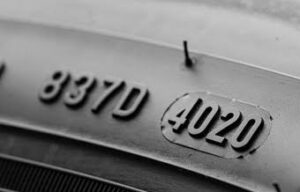
Example: DOT B5DE 4020
40 – The tyre was manufactured in the 40th week of the year.
20 – The tyre was made in 2020.
Why This Matters:
Tyres older than six years may start deteriorating, even if they look new.
Always check the manufacturing date when buying tyres.
5. Treadwear Rating: How Long Will Your Tyre Last?
The treadwear rating is a numerical value that indicates the tyre’s expected lifespan relative to a control tyre. The higher the number, the longer the tyre is expected to last.
How It Works:
A government test tyre is assigned a baseline treadwear rating of 100.
If a tyre has a rating of 200, it is expected to last twice as long as the control tyre.
If a tyre has a rating of 400, it should last four times as long as the control tyre.
Note:
✔ Higher treadwear numbers mean longer tyre life.
✘ However, high treadwear tyres may have less grip, as they use harder rubber compounds.
What to Consider
Performance tyres have lower treadwear ratings (100-300) because they use soft rubber for better grip.
Touring tyres and all-season tyres have higher treadwear ratings (400-800) for durability.
6. Traction Rating: How Well Does Your Tyre Grip the Road?
The traction rating measures how well a tyre grips the road, specifically in wet conditions. It is tested by measuring how quickly a tyre stops on wet pavement under controlled conditions.
The rating is given as one of the following:
✔ tyres with an “AA” or “A” rating provide better braking performance in the rain.
✘ “B” or “C” rated tyres take longer to stop on wet roads, increasing the risk of skidding.
What to Consider:
High-performance tyres often have an AA or A rating because they are designed for superior grip.
Economy tyres or budget tyres might have a B or C rating, which means they can take longer to stop in the rain.
If you drive in areas with heavy rainfall, always choose tyres with at least an “A” traction rating for safety.
7. Temperature Rating: How Well Can Your Tyre Handle Heat?
The temperature rating measures a tyre’s ability to withstand and dissipate heat at high speeds. Since tyres generate heat due to friction with the road, excessive heat buildup can cause tyre failure.
The rating system is as follows:
✔ tyres with an “A” rating are the best for high-speed driving and hot climates.
✘ Tyres with a “C” rating are more prone to overheating and could fail at high speeds.
What to Consider:
If you drive at high speeds or in hot climates, choose tyres with an “A” temperature rating to prevent overheating.
Budget tyres may have a “B” or “C” rating, meaning they are not ideal for high-speed driving.
Why Do These Ratings Matter?
The treadwear, traction, and temperature ratings help you make informed choices when selecting tyres.
For longevity, → Choose a tyre with a higher treadwear rating (400+).
For wet grip, → Look for an “AA” or “A” traction rating to reduce braking distances in the rain.
For high-speed driving, → Pick a tyre with an “A” temperature rating to prevent overheating.
Back to my story…
After explaining that my tyres were manufactured just 2 years ago and that my tyres had the load rating and speed index recommended by the manufacturer, the officer looked at me with a smirk and said “So, you want to teach us our job, right?🤨” I replied “No! Why would I do that?😅”
Finally, he said, “Oga, you can go. Have a nice day!”.
And a nice day it was, from there on.
If you would like to know the history of tyres, check it out here.
For tips to avoid expensive car repairs and to maintain your car, click here

